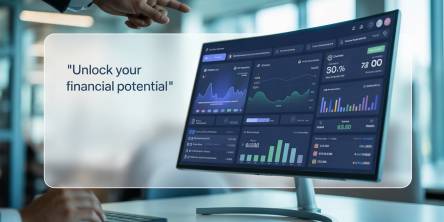Xamarin.Forms vs Xamarin Native: Which and When Should You Use Them?

Mobile apps are one of the most sought-after tools for any business in the modern world. This is owing to the rapid growth and use of mobile phones and devices in our daily lives — today; people depend on their mobile phones for pretty much everything. So, it only makes sense that businesses, no matter the industry, will be looking to leverage this golden opportunity in front of them. Now, this pursuit leads them to a rather critical question: What platform to use to build these apps? Of course, there are plenty of options to choose from. However, often this search leads folks to Xamarin, thanks to its long-proven ability to enable the development of rock reliable Android and iOS mobile apps.
However, it doesn’t end at just deciding to use Xamarin; one must also choose between Xamarin.Forms and Xamarin.Native as well. Unfortunately, this is where things get tricky. But don’t worry, because that’s precisely what this article seeks to help you with. Let’s start with a quick overview of both of them. Xamarin.Native is a cross-platform toolkit that enables the development of the app with .NET and C#. Xamarin.Forms, on the other hand, is essentially a more developed iteration of Xamarin.Native. However, with this one, you can develop one app for various platforms instead of building an app for every unique platform.
Now, let’s see which one of the two you should pick and when.
1. Budget: This is one of the critical considerations and rightly so—nonetheless — Xamarin.Forms will make the right choice if you are looking for a cost-effective option since it allows you to target multiple platforms with one app, whereas with Xamarin.Native, it would help if you had experts for each of the OS you are aiming at, thus instantly taking your costs up.
2. Development time: Xamarin on its own is an excellent tool for saving time spent on coding since it allows you to work with one C# codebase. But when it comes to Xamarin.Native, the ability to share code is restricted to about 75 percent. It is much higher with Xamarin.Forms allow about 95 percent code sharing, thus making the development cycle significantly faster than that of Xamarin.Native.
3. User experience: If you aim to offer complex animations and an overall intricate UI, our advice would be that you stick with Xamarin.Native. However, with a note that Native will allow you to build platform-specific user experiences. In contrast, with Forms, you can develop a UI that can be shared across platforms. Hence, with the latter, there are some limits to the scope of creativity one can integrate into the UI.
4. Maintenance: Yet another critical point of consideration when it comes to building apps is the effort required to ensure timely updates and maintenance. In general, Xamarin offers a distinct advantage in debugging, care of the codebase, etc—but speaking of Xamarin.Native, the programmers will need to first deal with base code and eventually the platform-specific code. Then there’s Xamarin.Forms, which offers a unified process in this regard, i.e. one can introduce all the requisite updates via just one codebase. If the app you have in mind will need regular updates and maintenance, the right way to go for you would be to work with Xamarin.Forms instead of Xamarin.Native.
Despite our best efforts, we understand that choosing between Xamarin.Forms and Xamarin.Native is not a cakewalk. However, you can always engage the services of a reliable service provider for app development using Xamarin. Their expertise will go a long way in helping you decide the right choice for you, thus ensuring ideal outcomes.
Similar Articles
Choosing the right GIS mapping software depends on what you need to accomplish. Some platforms cater to developers who want to build custom applications from scratch.
For data intensive industries such as insurance, the global business landscape is undergoing a profound transformation. Thanks to all the relentless technological innovation, this shift presents both significant challenges and unparalleled opportunities for modernization of the insurance sector.
Organizations are always looking for newer technologies to aid their operations. So, this hunt revolves around solutions that offer not only agility and scalability but are also cost-effective.
Not long ago, the idea of multiple AI agents working together, each with a specific role, collaborating to solve problems, felt like science fiction.
In today’s data-driven world, choosing the right business intelligence (BI) platform can make or break your organization's analytics success.
We all know that companies today are no longer limited to a single physical location. Work processes are also no longer strictly isolated.
It is neither secret nor news that the mind-boggling pace of digital transformation around us has totally altered consumer expectations.
In the world of finance, speed and accuracy are everything. Decisions made a day late can cost millions, and delayed visibility into financial performance can leave even the best organizations blind to risks.
Discover the best tools to enhance employee recognition, boost morale, and create a more motivated, engaged workplace culture.









